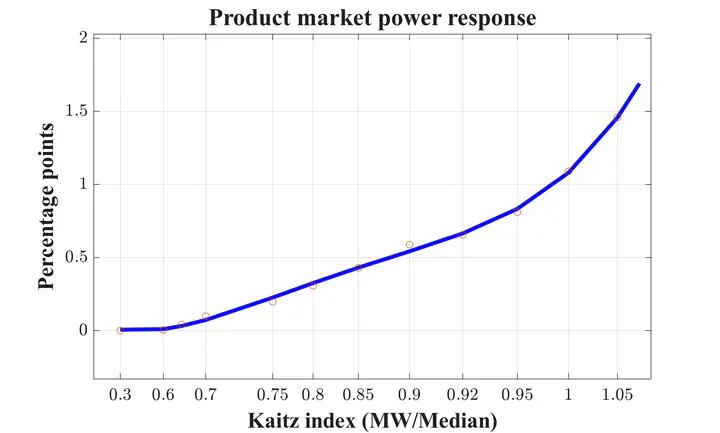
Abstract
We study the equilibrium and welfare effects of the minimum wage when product market power is endogenous and varies with market competition. A higher minimum wage reallocates workers from small to large firms. Large firms gain market share and increase their price markups. We call this mechanism ``concentration channel" of the minimum wage. We contribute an equilibrium model with frictional labor markets and oligopolistic product markets. We estimate the model on Italian administrative data, replicating the structure of detailed labor and product markets. We find that both the aggregate labor share and consumption are hump-shaped in the minimum wage, due to the opposing responses of price markups and wage markdowns. The optimal minimum wage directly affects 10% of workers. Endogenous product market power lowers the optimal minimum wage. We provide empirical evidence supporting the concentration channel.